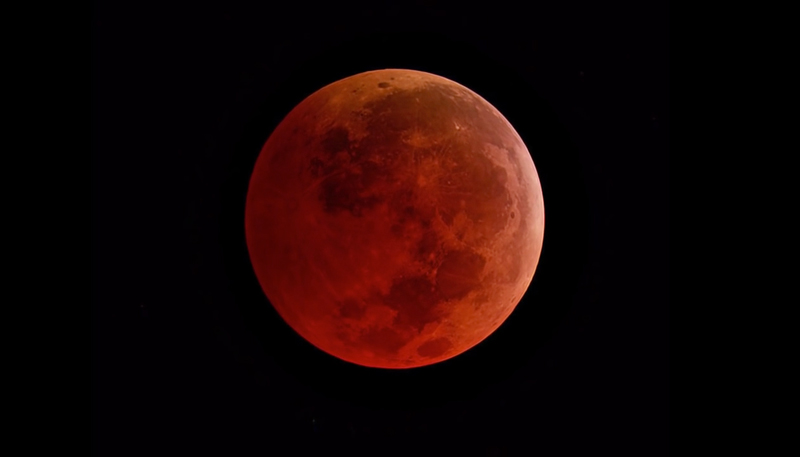


No need to fear ‘Super Blood Wolf Moon’
Photo courtesy of NASA January 18, 2019
But Sunday night’s lunar eclipse is fascinating astronomical phenomenon
Back in the day, the sight of a lunar eclipse and the blood-colored moon it revealed was enough to make people weak in the knees and prompt them to cry out for mercy. Surely forces beyond our control were about to visit terrors upon the Earth.
Today, such a sight is still fascinating, but astronomers and physicists have helped us understand such phenomena and those who find a patch of clear sky can watch in wonder, not in dread.
This weekend holds such an opportunity when the Super Blood Wolf Moon emerges in the night sky late Sunday into early Monday. In Delaware, eyewitnesses may have a rough go of it as weather forecasts call for a snowy, icy mix and heavy cloud cover for much of that stretch.
But no matter where you are and no matter how much cloud cover obstructs your view, the website timeanddate.com offers live coverage online.
The same site offers models of how the eclipse will unfold in various places around the world. The model for Newark is timed between 9:36 p.m. Sunday and 2:48 a.m. Monday, with the peak at 12:12 a.m. Monday.
“The full moon will look funny – unusual,” said Harry Shipman, retired professor of astronomy at the University of Delaware, who has been explaining astronomical wonders to students and the general public for 45 years. “It’s not the same big bright white thing. It’s a much dimmer, much redder thing.”
And it’s not so scary.
“Now we know what’s going on,” he said. “The light from the sun – which is what you see when you look at the moon – is partially blocked by the Earth. Some of it gets through the Earth’s atmosphere and that is what causes the red color.”
The dramatic name of this particular moon – the Super Blood Wolf Moon – is actually describing the phenomena that affect our view.
A moon is “super” when it is full and at its closest point to earth in its orbit. It’s a “blood” moon when a lunar eclipse is occurring and casting that deep red hue on it. And it’s a “wolf” moon when it happens in January.
“The nights are long in January,” Shipman said. “And in some parts of the world – I don’t think it will happen here – the wolves will be howling.”
The event may be of special interest to eighth graders in Delaware, who are supposed to keep track of the phases of the moon for a month, which is roughly the amount of time that elapses between full-moon cycles, Shipman said.
“It’s something everyone should learn about,” he said. “It’s an astronomical phenomenon. And the nice thing about a lunar eclipse – unlike a solar eclipse – is that well over half the people on the earth can see it if it’s a clear night. You don’t have to be in a special place, you don’t need special glasses and you don’t need binoculars to see it.”
Just look up.
NASA has extensive data on lunar eclipses on its website.
Contact Us
Have a UDaily story idea?
Contact us at ocm@udel.edu
Members of the press
Contact us at 302-831-NEWS or visit the Media Relations website

